
* In the early 1960s, Rockwell's Aero Commander division, well-known for its Commander twin-prop executive aircraft, introduced a twin-jet follow-on, the "Jet Commander". After initial production, the design was acquired by Israel Aircraft Industries (IAI), which developed it into the improved "Westwind" -- which gave way in turn to the swept-wing "Astra", and then the redesigned "Galaxy". This document provides a history and description of the Westwind-Astra series, as well as the IAI "Arava" light tactical transport. Illustrations credits are provided at the end.
* Israel Aircraft Industries (IAI) was founded in 1953 as the Bedek Aviation Company, through the efforts of the Israel Ministry of Defense, the primary mission being to provide technical support for the aircraft flown by the Israel Defense Forces (IDF). By the end of the decade, IAI -- for convenience, the Bedek name is not used further here -- was building aircraft, starting with the French Fouga Magister jet trainer. In the mid-1960s, IAI began work on the first aircraft of its own design, a light prop cargolifter that would emerge as the "Arava", which proved useful and popular. More is said about the Arava later.
Roughly in parallel, the Aero firm of the USA had introduced the twin-prop "Aero Commander" in the early 1950s, with the company being snapped up by Rockwell Standard in 1958. Aero then began work on a jet-powered follow-on to the Aero Commander, with the initial flight of the prototype of the "Aero Commander AC-1121 Jet Commander" on 27 January 1963. It demonstrated very good low-speed handling, but needed more payload capacity.
A second prototype, stretched by 76 centimeters (30 inches) and with considerable internal rearrangement, flew in the spring of 1964 -- a static-test prototype was also built -- with the first production aircraft rolled out late that year, FAA certification before the end of 1964, and initial customer deliveries in early 1965.
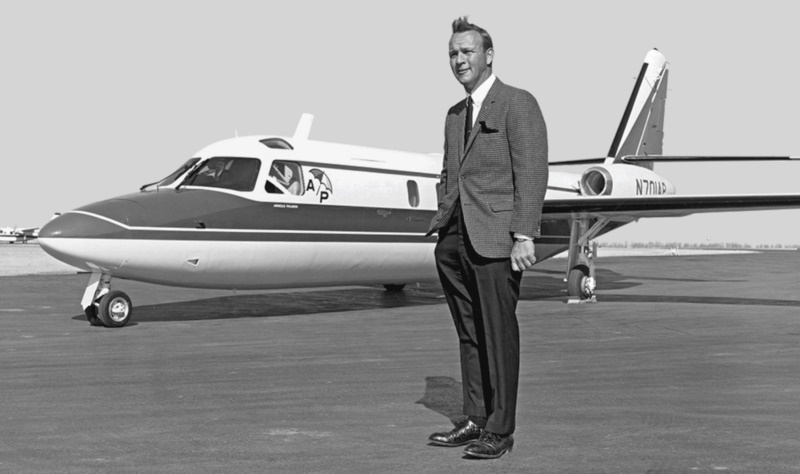
The Jet Commander unsurprisingly had a certain resemblance to the prop Aero Commander, the fuselage being derived from that of the pressurized Grand Commander -- though the windows were smaller, to handle the pressure differential of cruise at higher altitudes. The Jet Commander was of conventional business jet configuration, being an all-metal aircraft with tricycle landing gear and twin jets alongside the rear. The powerplants were General Electric CJ610-1 turbojets, providing 12.7 kN (1,290 kgp /2,850 lbf) thrust each, the CJ610 being a civil version of the military J85 turbojet.
A total of 120 Model 1121s was built, including the two flight prototypes. Production moved on the "Model 1121A" in 1967, featuring refinements such as more fuel capacity, improved cockpit lighting, and greater maximum take-off (MTO) weight, with reinforced landing gear to handle the greater weight. 11 were built.
In that year, 1967, the product line changed hands, when Rockwell snapped up North American Aviation, to become North American Rockwell. This created a conflict, in that the North American already had a comparable executive jet, the Sabreliner, and the US government made it clear the merger wouldn't be approved unless the new firm divested one of its business jet lines -- besides, selling two similar products was a little awkward.
The important factor in deciding which one to keep was the US Air Force, which had obtained the Sabreliner as the "T-39" trainer, and was not happy with the idea of Rockwell giving it up. Rockwell decided to sell the rights to the Jet Commander, with IAI obtaining them in 1968. The Israeli firm sold them under the name of "Commodore" -- though for simplicity, that name is not used here -- with production moving up to the "Model 1121B".
* Detailed specifics of the original Model 1121 and Model 1121A being hard to find, the Model 1121B ends up being the archetype of the Jet Commander series. The Jet Commander was an all-metal, low-wing aircraft with twin turbojets mounted in nacelles on the rear fuselage. The aircraft had tapered wings, somewhat unconventionally mid-mounted instead of low-mounted, with a slight dihedral, and swept tail surfaces -- the tailplane being mounted on the tailfin, not far above the top line of the fuselage.
The steerable nose gear had twin wheels and retracted backward; the main gear had single wheels, and retracted from the inboard wing outward into the wings. The landing gear was hydraulically actuated; it was reinforced from the Model 1121A, since the Model 1121B had still higher MTO weight.
Flight control surfaces were conventional, with ailerons rudder, elevators, split flaps, and trim tabs; the surfaces were manually actuated, except for hydraulically-driven flaps, and an electrically-driven trim tab in the left aileron. Tailplane incidence was adjustable for pitch trim, apparently using electric drive. There was also a single hydraulically-operated spoiler on top of each wing at the end of the flap, and there was a hydraulically-actuated speed brake on each side of the rear fuselage, under the wing. Flight surfaces were de-iced by pneumatic boots, while the engine inlets were de-iced by engine bleed air, and the windscreen was electrically de-iced.
The Model 1121B featured CJ610-5 engines with 13.1 kN (1,335 kgp / 2,950 lbf) thrust, about 3% more powerful than the CJ610-1 engines of the Model 1121 and 1121A. Thrust reversers were available as an option. Total fuel capacity was 4,126 liters (1,090 US gallons), in four fuselage bladder tanks and an integral tank in each wing. There was a refueling point on top of each wing. It appears the integral tanks were introduced in the Model 1121A.
Maximum passenger capacity was eight seats, with executive configurations featuring four seats and luxury fittings. Accommodations were pressurized and climate-conditioned. There were typically four passenger windows on each side of the fuselage, and a distinctive "eyebrow" window above each side cockpit window, added in the second prototype to improve flight crew field of view in turns. There was a front-hinged door on the forward left fuselage -- between the first and second passenger windows; and an emergency exit around the second window forward of the wing, on both sides.
Not all photos of Model 1121s show the window forward of the door; it appears that early production had a cabin layout that didn't need the window, with some later cabin layouts also eliminating the need for the wings -- so some machines had three windows on one or both sides. The view from the passenger windows was excellent, the passenger cabin being forward of the wings -- of necessity, the spars of the mid-mounted wing going through the fuselage. There was a baggage hold in the rear fuselage, with an access hatch under the left wing.
___________________________________________________________________
AERO COMMANDER MODEL 1121 JET COMMANDER:
___________________________________________________________________
wingspan:
13.2 meters (43 feet 7 inches)
wing area:
28.18 sq_meters (303.3 sq_feet)
length:
15.37 meters (50 feet 5 inches)
height:
4.81 meters (15 feet 10 inches)
empty weight:
4,570 kilograms (10,075 pounds)
MTO weight:
7,620 kilograms (16,800 pounds)
max speed at altitude:
840 KPH (525 MPH / 455 KT)
cruise speed:
785 KPH (490 MPH / 425 KT)
service ceiling:
13,720 meters (45,000 feet)
range, max payload:
2,960 kilometers (1,840 MI / 1,600 NMI)
___________________________________________________________________
19 Model 1121Bs were built, with some of the earlier models updated with the same engines. That gave total production of the Model 1121 variants as 150 aircraft. From 1971, some of the machines in service were modified to handle higher MTO weight, these aircraft being informally redesignated "Model 1121C".
* Although IAI hadn't invented the Jet Commander, the company made it its own -- initially flying two improved "Model 1122" demonstrators, but bypassing that configuration with the "Model 1123 Westwind", the two Model 1122s being rebuilt as Model 1123s. Initial flight of the first Model 1123 was on 28 September 1970. The Model 1123 was much the same as the Model 1121, but featured updates including:
There were typically eight passenger seats, ten in a high-density configuration, fewer seats in VIP / executive configurations.

Only 36 Model 1123s were built, the variant being quickly updated to the "Model 1124 Westwind" configuration, with initial flight on 21 July 1975, and introduction to service in 1976. The Model 1124 featured:
IAI developed a maritime patrol configuration of the Model 1124 for a US Coast Guard requirement, with the USCG evaluating an example. The contract ended up being awarded to the French Dassault Falcon 20, but the IDF-AF decided to obtain the design instead. It went into service as the "1124N Sea Scan" -- which was called the "Shachaf (Seagull)" in service.
The Sea Scans had Litton AN/APS-504 radar in a bulbous nose radome, plus bulged observation windows, and a pylon mounted low on each side of the fuselage for hauling stores. The IDF-AF obtained three, with Australian Customs obtaining three as well. The Australian machines did not have the stores pylons.
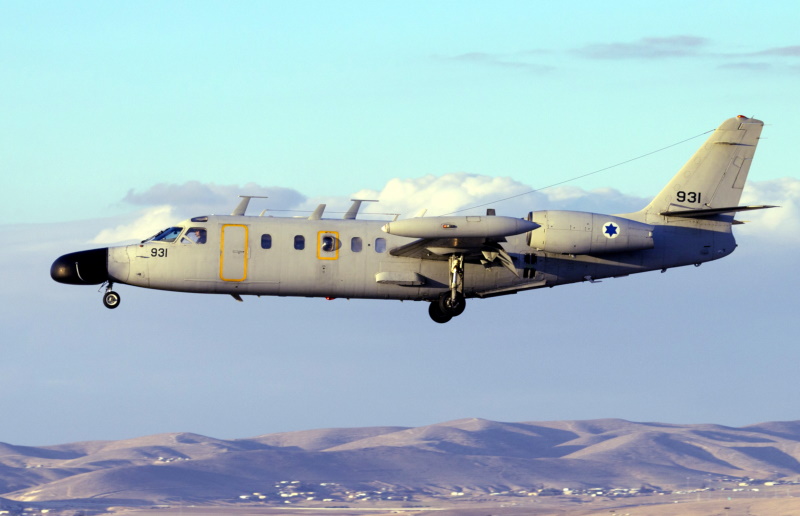
The last variant of the Westwind was the "Model 1124A Westwind II" -- the Model 1124 retroactively becoming the "Westwind I". The Westwind II was introduced in 1980, the primary changes being a new wing center section and winglets on the wingtip fuel tanks. The last Westwind was rolled out in 1987, after production of 150 Jet Commanders and 292 Westwinds.
___________________________________________________________________
IAI 1124A WESTWIND II:
___________________________________________________________________
wingspan:
13.65 meters (44 feet 10 inches)
wing area:
28.64 sq_meters (308.3 sq_feet)
length:
15.93 meters (52 feet 3 inches)
height:
4.81 meters (15 feet 10 inches)
empty weight:
6,010 kilograms (13,250 pounds)
MTO weight:
10,660 kilograms (23,500 pounds)
max speed at altitude:
840 KPH (525 MPH / 455 KT)
cruise speed:
785 KPH (490 MPH / 425 KT)
service ceiling:
13,720 meters (45,000 feet)
range, max payload:
4,430 kilometers (2,770 MI / 2,390 NMI)
___________________________________________________________________
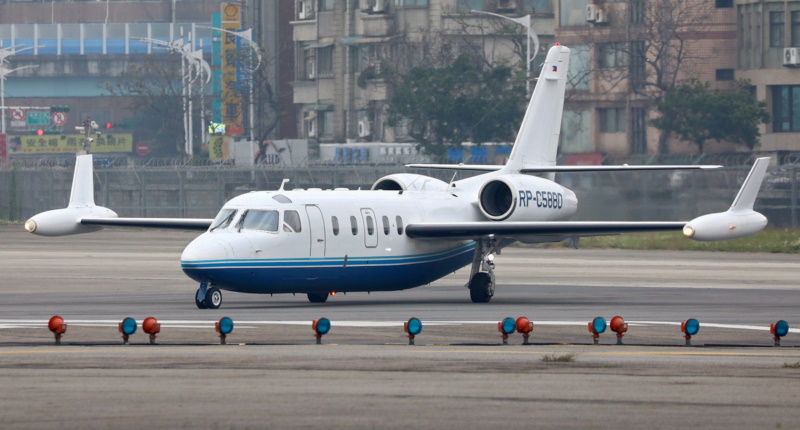
Westwinds were sold around the Western world and to undeveloped states. Executive configurations were flown by Royal Canadian Mounted Police, the Chilean Navy, Ecuadorian Air Force, Mexican Air Force, Panamanian Air Force, and Ugandan Air Force. There was a trials fit of machine-gun pods on the wingtips for the Ugandans, but the deal fell through, and the tip tanks were restored. Four Model 1124 machines were operated as target tugs by Rhein Flugzeugbau, providing service to the German military until 1990. The IDF retired the Sea Scan at the end of 2016.
BACK_TO_TOP* Production of the Westwind II was ended to yield production to a swept-wing derivative. Work on the improved design began in the late 1970s, with the initial flight of the first of two flight prototypes of the "Model 1125 Astra" on 19 March 1984; a static-test prototype was built as well. The first production Astra was rolled out in the spring of 1984, with certification awarded later that year, and initial deliveries in 1986.
The most visible difference of the Model 1125 from its predecessor was that the wing was low-mounted, with a sweep of 34 degrees inboard -- along with a straight trailing edge -- and 25 degrees outboard -- along with a swept trailing edge. Each wing had dual flaps, with two spoilers on the top of the wing forward of the outboard flap, and an aileron on the outer wing; the outboard section of each wing also had leading-edge slats, which deployed along with the flaps.
The rudder was manually actuated, with a bias system to reduce pedal force in case of engine failure; the ailerons, elevators, and spoilers were hydraulically driven; with the flaps and slats electrically driven. The controls featured an artificial feel system to provide pilot feedback. The tailplane had adjustable incidence for pitch trim. The flight surfaces were pneumatically de-iced.
The Model 1125 incorporated a number of composite assemblies. The fuselage was based on that of the Westwind, but widened by 5 centimeters (2 inches) and stretched by 61 centimeters (2 feet); the nose was also stretched by 51 centimeters (20 inches) to provide more space for avionics. Six passenger seats were standard, with nine in a high-density configuration. The cabin had near-vertical sidewalls to provide more shoulder room, the configuration being described as "square oval", with a dropped center aisle giving 170 centimeters (67 inches) of headroom. There was a galley and coat closet in front, plus a lavatory in the rear. There was a heated baggage compartment in the rear fuselage, with an access hatch on the rear.
There was an airstair door on the front left fuselage, and an emergency exit over each wing. The cockpit featured a five-tube Collins electronic flight instrumentation system (EFIS) and color weather radar, with the windscreen being electrically de-iced.
Of course, with the new low wing, the main landing gear was redesigned -- still pivoting from the inboard wing towards the fuselage, but much shorter, and with twin wheels to handle greater take-off weight. Of the airframe, only the tail unit survived intact from the Model 1124. The Model 1125 was powered by uprated Garrett TFE731-3A-200G turbofans with 16.46 kN (1,680 kgp / 3,700 lbf) each, featuring Grumman-made thrust reversers, and hot-air de-icing of the inlets. There were fuel tanks in the wing center section, fore and aft in the fuselage, and in the outer wings, with single-point refueling, total fuel capacity being 4,910 liters (1,927 US gallons). A removeable auxiliary fuel tank with a capacity of 379 liters (100 US gallons) could be fitted in the rear baggage hold.
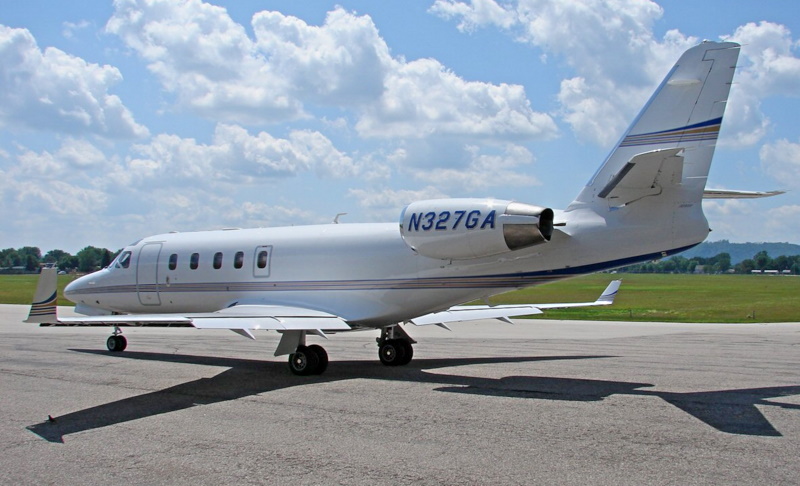
32 Astras were built. An improved variant, the "Astra SP", was announced in 1989, featuring updated avionics, and refined aerodynamics giving an increment of range, plus greater MTO. It also featured updated avionics and interior. 37 Astra SPs were built. The Astra SP was followed in turn in 1994 by the "Astra SPX", which featured:
An APU was optional. 36 Astra SPX machines were built.
___________________________________________________________________
IAI 1125 ASTRA SPX (GULFSTREAM G100):
___________________________________________________________________
wingspan:
16.64 meters (54 feet 7 inches)
wing area:
29.41 sq_meters (316.6 sq_feet)
length:
16.94 meters (55 feet 7 inches)
height:
5.54 meters (18 feet 2 inches)
empty weight:
6,214 kilograms (13,700 pounds)
MTO weight:
11,180 kilograms (24,650 pounds)
max speed at altitude:
880 KPH (545 MPH / 475 KT)
cruise speed:
850 KPH (530 MPH / 460 KT)
service ceiling:
13,700 meters (45,000 feet)
range, max fuel:
5,460 kilometers (3,395 MI / 2,950 NMI)
___________________________________________________________________
In 1997, the US Air Force obtained the Astra SPX as the "C-38A Courier", replacing the older Learjet C-21. The C-38A was generally a stock G100, except for being fitted with military radios and other militarized kit. It was flown by the 201st Airlift Squadron at Andrews Air Force Base in Maryland as a VIP transport. The C-38A was also later obtained by the US Navy, for use as a chase plane, radar calibration target, and for pilot proficiency evaluation.
* In the late 1980s, IAI set up a partnership with the Russian Yakovlev aircraft design organization to create a next-generation follow-on in the Astra family. Astra sales were poor, the main reason being that cramped business jets had gone out of fashion, and so IAI wanted to come up with a roomier design. Work on the new aircraft, originally named the "Astra IV", then changed to "Galaxy", was publicly announced in 1993 -- but the partnership with the Yakovlev organization didn't work out, being abandoned in 1995.
In 1997, the Galaxy program seemed near to collapse. The Israeli government refused to bail IAI out of the program unless IAI got a foreign partner. IAI accordingly set up a partnership with Hyatt Corporation of Fort Worth, Texas, with the partnership named "Galaxy Aerospace". The general plan was that IAI would build the airframes, then fly them to Texas for full interior fit. Galaxy Aerospace would handle the Astra SPX, then the Galaxy when it finally flew.
In 2001, Galaxy Aerospace was bought up by the US conglomerate General Dynamics, to be associated with the General Dynamics subsidiary Gulfstream, which made higher-end executive jets. The Astra SPX accordingly became the "Gulfstream G100" in 2002. A total of 77 Astra SPX / G100 machines was built.

In that same year, 2002, Gulfstream announced an improved follow-on to the G100, the "Gulfstream G150". It had a cabin that was 30 centimeters (1 foot) wider and 41 centimeters (16 inches) longer; a Collins Pro Line 4 avionics system; elimination of the traditional windshield wipers with a rain-repellent coating; TFE731-40AR-200G engines with 19.7 kN (1,995 kgp / 4,400 lbf) thrust each; updated avionics; and MTO weight increased by about 6%. The nose was distinctly reprofiled, not being as "pointy" as that of previous Astra variants.
The G150 obtained certification in 2005, replacing the G100 in production, after the manufacture of 77 machines. The G150's delays in getting to market and the lackluster reputation of the Astra meant the G150 wasn't a hit. Due to slow sales, production of the G150 was ended in 2017, after production of about 120 machines. They had been sold all over the world, being used as VIP transports by Eritrea, India, and Israel.
BACK_TO_TOP* The first of two IAI Galaxy prototypes -- not counting two ground-test airframes -- performed its initial flight on 25 December 1997, receiving certification in 1998, and with first customer deliveries in 2000. After Galaxy Aerospace was acquired by Gulfstream, the aircraft became the "G200".
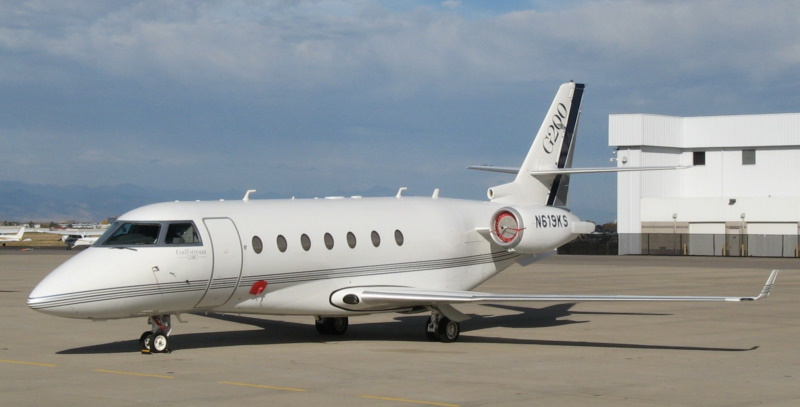
The G200 was more or less the G100 with a new, wider, all-metal fuselage, providing three-across seating and stand-up headroom. The wing inherited from the Astra SPX was reinforced, as well as given a short 34.5-degree inboard leading-edge wing-root extension, sweep, and inboard hydraulically-driven leading-edge "flip-over" Krueger flaps to improve short field performance. Twin ventral fins were added for yaw stability.
The G200 had a reduced parts count, improving serviceability, and featured Collins Pro Line 4 avionics with five displays. The G200 was powered by twin PWC PW306A turbofans with 26.9 kN (2,740 kgp / 6,040 lbf) thrust each. Fuel was stored in wing tanks, plus forward, center, and aft fuselage tanks. Fuel capacity was 7,882 liters (2,080 US gallons).
The G200 could normally seat 8 to 10 passengers in a VIP configuration, with an entertainment system being a normal part of the kit, or 18 in a high-density "corporate shuttle" configuration. A lavatory in the rear and a galley in the front were standard fit. There was an airstair door on the front left fuselage, and an emergency exit over the right wing. There were eight passenger windows on the right side of the fuselage, the emergency exit being at the last window, and seven on the left side. There was a pressurized baggage hold in the rear fuselage, with an access door on the rear left fuselage.
___________________________________________________________________
GULFSTREAM G200 (ASTRA GALAXY):
___________________________________________________________________
wingspan:
17.7 meters (58 feet 1 inch)
wing area:
34.3 sq_meters (369 sq_feet)
length:
18.97 meters (62 feet 3 inches)
height:
6.53 meters (21 feet 5 inches)
empty weight:
8,710 kilograms (19,200 pounds)
MTO weight:
16,180 kilograms (35,450 pounds)
max speed at altitude:
900 KPH (560 MPH / 485 KT)
cruise speed:
850 KPH (530 MPH / 460 KT)
service ceiling:
13,700 meters (45,000 feet)
range, max fuel:
6,300 kilometers (3,910 MI / 3,400 NMI)
___________________________________________________________________
The last G200 was built in 2011, after manufacture of 250 airframes. Production ceased to make way for the improved "G280". Work had begun on an updated G200 in 2005, with the program publicly announced in 2008. The aircraft was originally designated the "G250" -- but it was changed when it was learned the number "250" implies "idiotic" in Mandarin.

In any case, initial flight of the G280 was on 11 December 2009, with certifications in 2012, and customer deliveries following. It was effectively the G200 with a new wing -- 34% larger, with no leading-edge surfaces and de-icing by engine bleed air, derived from the wing of the Gulfstream G550/H650. The spoilers and rudder were electronically actuated, the elevators and flaps were hydraulically actuated, while the ailerons were manually actuated. The tail assembly was enlarged as well. Other changes from the G200 included:
Empty weight increased by 25%, range by 6%. Passenger load was 8 or 10 seats, in executive configuration; a high-density configuration wasn't on offer. Although fuel capacity shrank from the G200, the more modern engines and aerodynamic improvements meant the G280's range was longer. Ironically, an aircraft line with roots in the Aero Commander ended up with a machine that was hard to tell from other Gulfstream executive jets. The G280 remains in production.
BACK_TO_TOP* As mentioned earlier, in the 1960s IAI developed the Arava light cargolifter. Work began in 1965, the specification envisioning an aircraft that would carry 20 passengers or bulky cargo, have good short take-off / landing (STOL) characteristics, and operate from rough airstrips. The initial flight of the Arava was on 27 November 1969.
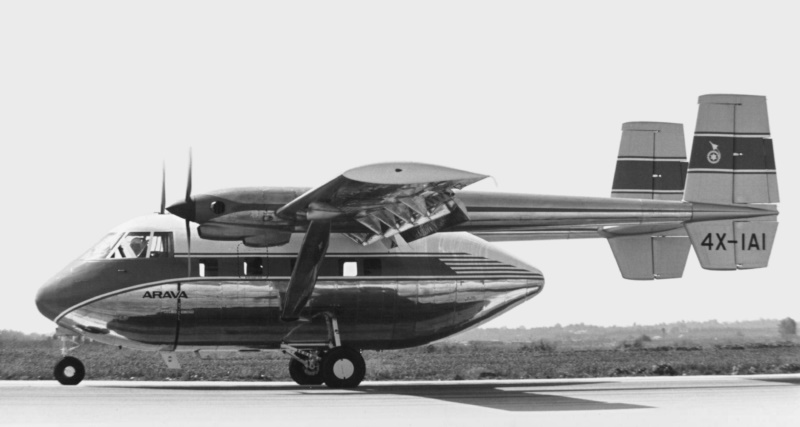
The Arava had a general configuration along the lines of that of the US Fairchild C-119 Flying Boxcar or the French Nord Noratlas -- indeed, it looked very much like a scaled-down Noratlas. The Arava featured a capacious fuselage with a high wing, with a boom extending from an engine in front of each wing back to a tail assembly joining the booms. The Arava had a cylindrical fuselage, like that of the Noratlas; fixed tricycle landing gear, all with single wheels; a single strut bracing each wing; with the rear end of the fuselage hinging to the right to permit cargo loading.
There was also a rear-hinged passenger door on the left rear fuselage -- apparently it could be easily removed for parachute drops -- and a smaller forward-hinged door on the right rear fuselage. There was also a cockpit-entry "airstair" door on the right side of the forward fuselage. There were five passenger windows on each side of the fuselage, with an emergency exit around one forward of each wing. It was powered by twin Pratt & Whitney Canada (PWC) PT6A-27 turboprops, with 535 kW (715 SHP) each, driving three-bladed variable-pitch props.
Civil and military versions were built:
Military configurations could be armed for battlefield or maritime warfare roles. A machine gun, usually a 12.7-millimeter (0.50 caliber) Browning, could be mounted in a fairing on each side -- a flexibly-mounted machine gun could be mounted in the rear as well. There was also a stub for mounting a store on each side, typically a SNEB / Brandt 68-millimeter unguided rocket pod.
___________________________________________________________________
IAI 201 ARAVA:
___________________________________________________________________
wingspan:
20.96 meters (68 feet 9 inches)
wing area:
43.68 sq_meters (470.2 sq_feet)
length:
12.69 meters (41 feet 6 inches)
height:
5.21 meters (17 feet 1 inch)
empty weight:
4,000 kilograms (8,815 pounds)
MTO weight:
10,660 kilograms (23,500 pounds)
cruise speed:
320 KPH (200 MPH / 170 KT)
service ceiling:
7,620 meters (25,000 feet)
range, max fuel:
1,055 kilometers (655 MI / 570 NMI)
___________________________________________________________________
A few Aravas were used for maritime surveillance, being fitted with a search radar, while a handful were configured for the electronic warfare (EW) mission, featuring antenna domes for their radio gear. It appears such special-mission aircraft were, in general, easily reconfigured for different missions, with their configurations varying over time.
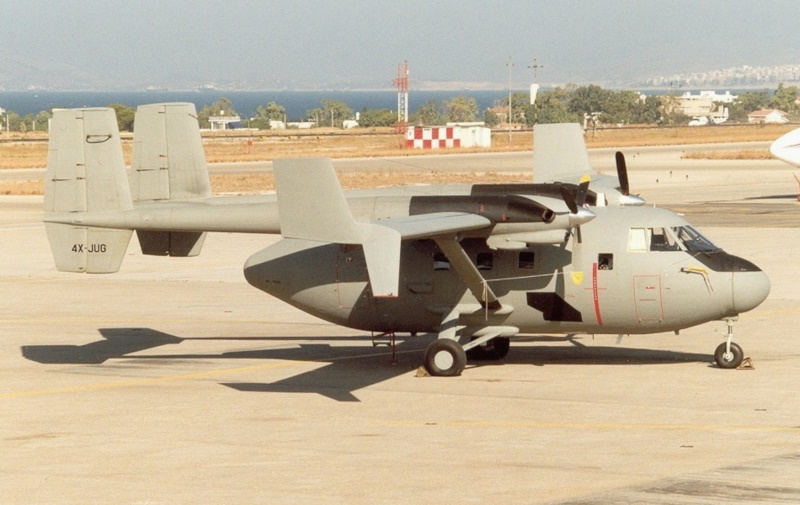
The Arava was relatively popular in the developing world, particularly in Central and South America, and was also adopted by Swaziland and Thailand. The Israel Defense Forces / Air Force (IDF-AF) didn't acquire the Arava until 1983. Production of the Arava was modest, with 103 built in all to end of production in 1988, most being flown by military or paramilitary services. The IDF-AF retired their Aravas in 2004. A few may linger in service.
BACK_TO_TOP* Trying to find sources on the Westwind / Astra series was troublesome. I ended up canvassing my set of JANE'S ALL THE WORLD AIRCRAFT, and online sources such as Wikipedia, following up Wikipedia links to articles.
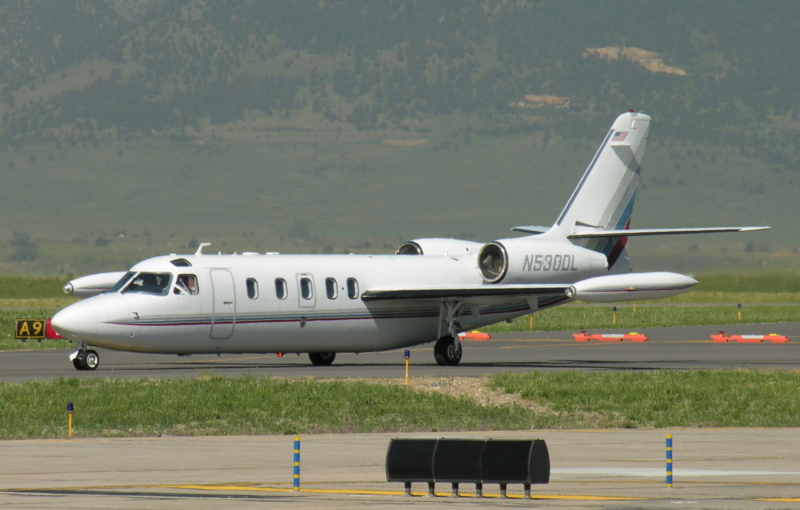
* Illustrations credits:
* Revision history:
v1.0.0 / 01 aug 18 v2.0.0 / 01 oct 18 / Comprehensive update. v2.1.0 / 01 sep 20 / Illustrations update. v2.1.1 / 01 jul 22 / Review & polish. v2.1.2 / 01 jan 24 / Review & polish.BACK_TO_TOP
